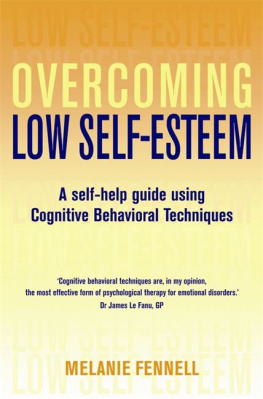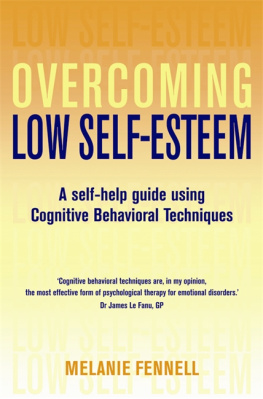For Sasha, Barmie and Raffie
Also to Sadie, the star of this book 5/12/199528/10/2005
It is important to state here that my method cannot remove the aggressive tendencies of any dog. Certain breeds have been raised specifically for the purpose of fighting, and my methods will never be able to alter their potentially savage nature. What my method can do is allow people to manage their dogs so that this aggressive instinct is never called upon. Please exercise the greatest of caution when working with such dogs.
The response to the publication of my first book, The Dog Listener, has been truly humbling. I seem to have struck a chord with so many people who share my belief that humans and dogs can enjoy a peaceful and rewarding coexistence. The thought that many of these people are now successfully implementing the compassionate training method I outlined, and so are learning to understand the dogs own language, heartens me enormously.
The many words of support I have received since publication echo those I first heard on a much smaller scale when I began treating problematic dogs almost ten years ago. At the time, people raised on the idea of obedience training, of sublimating the dogs will to that of its human master, were overwhelmed to discover that dogs could coexist with humans while still exercising their own free will. They were amazed to discover that, as I like to put it, the best form of control is using the dogs self-control.
Peoples responses to the practicalities of applying my method have conformed to an equally familiar pattern. And it was here that the seeds of the idea for this book were sown. From my earliest experiences in dealing with owners on a one-on-one basis, I quickly learned that no two dogs, no two homes and no two relationships between dog and owner are the same. On the one hand, this is one of the main reasons why my work remains such a source of fascination to me. However, this also makes it natural that my work divides itself into two distinct phases: the home visit itself and the post-visit, or backup, service.
During the crucial first consultation, it is my job to explain and demonstrate the principles that underpin my work. From there, I go on to offer owners basic instructions on how to implement my method. Many owners are able to replicate my method almost instantaneously, yet just as many require ongoing supervision. This is no criticism of any of them: while, at heart, my method is a simple one, the practicalities of implementing it are at times demanding. Some people dont have the time or the resources to devote themselves as fully as others. Some have tried so many different methods, they cannot separate mine from the others. Equally, while I believe all dogs understand and react to my signals in the same way, every dog has a personality that can manifest itself in a different form of behaviour. Some dogs are simply more strong-willed and resistant than others. As a result, I make sure I am always at the end of a telephone line to guide owners through the difficult moments.
My first book was, in many ways, the equivalent of the home visit. Within its pages I outlined my ideas and explained how they evolved through long and hard experience. It was, if you like, my mission statement. Now I have produced this second book as the backup, the practical guide to putting that philosophy to work. The reaction to the first book has helped shape the content of this companion volume. Many of the people who have contacted me since reading The Dog Listener have asked me to develop specific ideas touched on in the first book. Most of them have wanted to apply them to the practical realities of their own situations. Many people, for instance, own more than one dog. Others find it hard to impose themselves on their dog, to present the signals consistently and to interpret their dogs reaction correctly. Some find it difficult to incorporate my method into their hectic lives. Others have dogs that have displayed behaviour so bizarre, it simply hadnt occurred to me it existed! I have no doubt there are dogs out there with traits that I still havent imagined. Nevertheless, I have done my best to cover as many of the unexplored areas as I can in this book.
My goal is to allow anyone to implement my method. So, to make it as accessible as possible, I have divided what follows into a guide through the key phases of the crucial first thirty days. I am adamant in my belief that the work of a responsible and caring owner begins even before a dog arrives within the home. With this in mind, I have included a section on the all-important preparations required too. From meeting and corresponding with people, I know how many readers enjoyed hearing of my adventures in treating problem dogs, so I have made sure I have included as many anecdotal examples as possible to illustrate my points. In response to readers comments, there are also step-by-step photographs.
There are goals that can be achieved at regular intervals throughout this method. For instance, it is my belief that most dogs and their owners can attain a basic new understanding of each other within two days. Within a week, I believe most owners should be ready to begin taking their dogs out on walks in public places. At the same time, I am not so foolish as to claim that my method will turn even the most difficult and badly behaved dog into the perfect companion within a month. Nor am I going to promise that every dogs progress will conform to precisely the same pattern. If you find your dog is not doing something within four, fourteen or even forty days, you should not despair. Results will come with application and patience. Provided you persevere and apply my ideas consistently, even the most desperate owner should see huge improvements within this first month. Perhaps even more importantly, you should also have changed your perspective of your dog. Both of you should then be ready to join the growing band of owners and dogs that are enjoying a happier and more fulfilling life together.
Lincolnshire, England, October 2001
Home Truths
In the decade since I first began developing my ideas about communicating with dogs, I feel as if Ive been travelling a long, mysterious and seemingly endless road. If I am honest, it has been a journey filled with more than its fair share of wrong turns and blind alleys. Yet around every corner there has been something new to learn.
My travels have now taken me far from home, and the close-knit community of friends and fellow dog lovers within which I began my work. It has been a privilege to meet and help either directly or indirectly dogs and owners as far afield as Thailand and the United States, New Zealand and France. Wherever I have travelled I have encountered situations that, sometimes subtly, sometimes dramatically, have deepened my understanding and reaffirmed my belief in the principles of the hidden language that underpins dog behaviour. It is ironic, then, that the most powerful and painful lesson of recent times should have been delivered within the confines of my own home.
Theres an old saying that if you want to give God a laugh, you tell him your plans. It never seemed so apt as it did in May 2001. At the time, I must admit, I had been feeling on top of the world. I had travelled to Poland to promote the publication of my first book, The Dog Listener. It was the first time I had ventured abroad to talk about my work. Meeting dog lovers in cities like Warsaw, Lodz and Cracow was an exciting and uplifting experience, something Id never imagined would happen to me. I was guest of honour at the countrys main dog show and was feted on television shows and at Champagne receptions and dinners; they treated me like royalty. On the plane back from Warsaw, I had much more to look forward to: a follow-up book, planning a series for television in the UK and finalising the details for my trip to New York, for the launch of the American edition of the book in late July all heady stuff.














